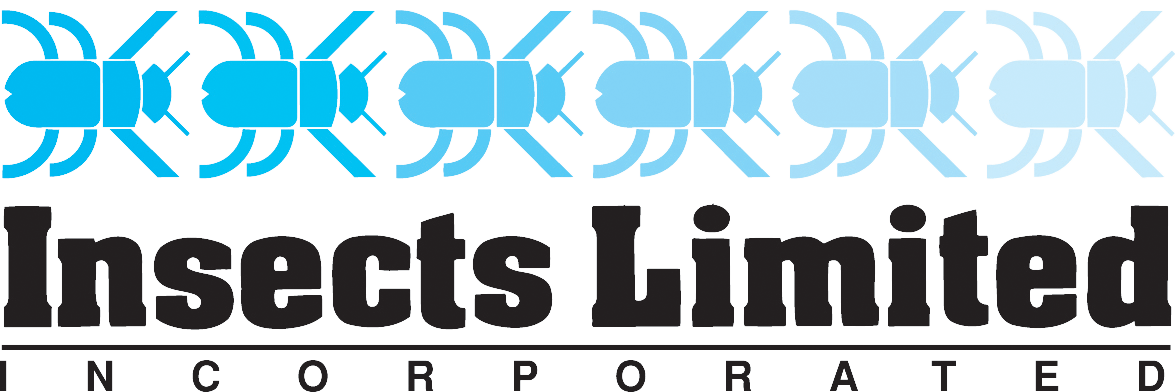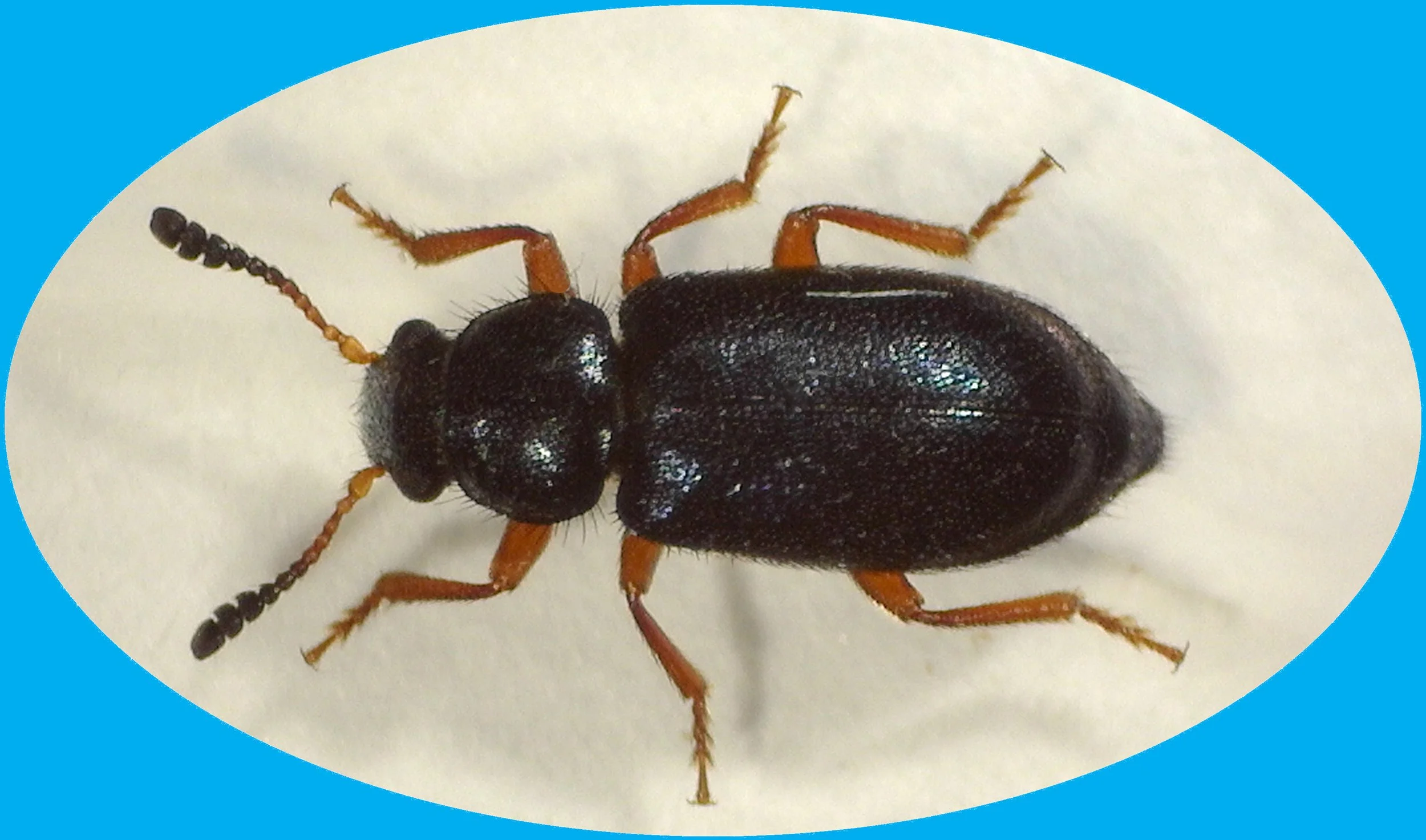5 Things to Know About the Red-Legged Ham Beetle
This month, we’re spotlighting the Red-Legged Ham Beetle (Necrobia rufipes) – a small but highly destructive pest known for infesting cured meats, pet food, and even museum specimens.
While its bright red legs and metallic blue body may seem harmless, this beetle can cause serious economic and material damage. Understanding its habits, life cycle, and warning signs is key to prevention and management.
1. What Does a Red-Legged Ham Beetle Look Like?
Adult Red-Legged Ham Beetles are small (3-7 mm long) with a shiny, metallic-blue body and distinctive reddish legs and antennae. Their striking coloration makes them easy to identify compared to other stored product beetles.
The larvae have a dark brownish body and reddish-brown heads and covered with fine hairs, growing up to 8 mm long before pupating. Both adults and larvae are active feeders, making early detection essential.
2. Where Are Red-Legged Ham Beetles Found?
This pest thrives wherever animal-based materials are stored or processed. Common infestation sites include:
Cured or smoked meats (like hams and bacon)
Dried fish and pet foods
Cheese and bones
Museum collections and taxidermy specimens
The beetles are often introduced through infested raw materials or contaminated shipments, spreading quickly in warm conditions.
3. What Do Red-Legged Ham Beetles Damage?
The larvae are the most destructive stage of the Red-Legged Ham Beetle’s life cycle. They bore into dried meats, high-protein materials, and animal products, feeding extensively and leaving behind tunnels and frass.
In addition to direct product loss, infestations can cause contamination and unpleasant odors – both of which make affected materials unsellable. In museums, larvae can damage preserved animal specimens.
4. How Can You Detect a Red-Legged Ham Beetle Infestation?
Early identification is critical for prevention. Key signs of infestation include:
Visible adults with metallic blue bodies and red legs
Larvae burrowing into meat, pet food, or preserved materials
Presence of frass (powdery residue) or feeding damage
Beetles found near stored meat, animal products, or displays
White silken cocoons in fibrous materials or in small gaps including corrugation in cardboard
Using pheromone monitoring traps helps detect early adult activity before populations grow large enough to cause damage.
5. How to Mange and Prevent a Red-Legged Ham Beetle Infestation?
Long-term management of Red-Legged Ham Beetles requires an integrated pest management (IPM) approach:
Inspect incoming materials for signs of infestations
Store susceptible products in cool, dry, sealed environments
Clean storage and processing areas regularly to remove residues
Monitor with pheromone traps to detect early activity
Remove infested materials immediately to prevent spread
Manage Red-Legged Ham Beetles with Insects Limited Solutions
Insects Limited offers a Red-Legged Ham Beetle Monitoring Kit (IL-660) designed specifically for early detection and prevention.
This complete kit includes pheromone-baited traps that help you track beetle activity and support compliance with sanitation and audit standards.
Explore our Red-Legged Ham Beetle Solutions or contact our team for expert guidance.
Insects Limited, an Insect Pheromone Company
Insects Limited, Inc. researches, tests, develops, manufactures and distributes pheromones and trapping systems for insects in a global marketplace. The highly qualified staff also can assist with consultation, areas of expert witness, training presentations and grant writing.
Insects Limited, Inc. specializes in a unique niche of pest control that provides mainstream products and services to protect stored food, grain, museum collections, tobacco, timber and fiber worldwide. Please take some time to view these products and services in our web store.



